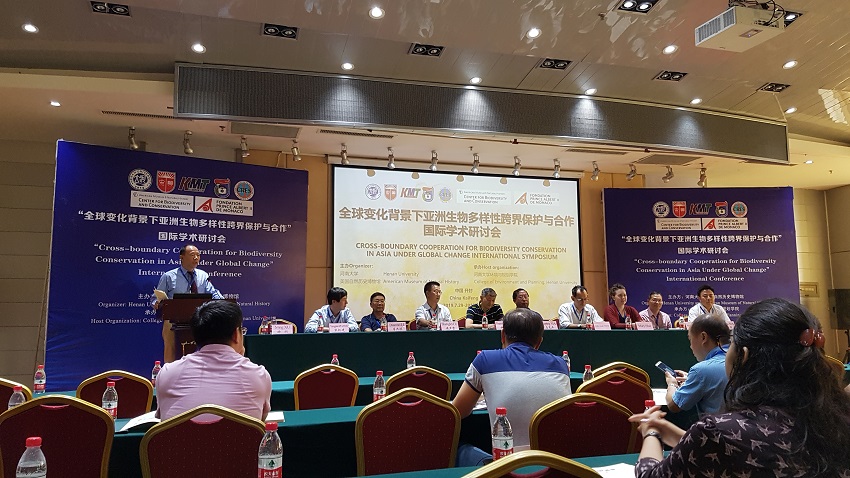APAP emphasizes regional collaboration to strengthen transboundary protected areas management
The Asia Protected Areas Partnership (APAP) was highlighted as a model for regional collaboration for biodiversity conservation during the ‘’International Symposium on Cross-boundary Cooperation for Biodiversity Conservation in Asia Under Global Change’’ held from 29 to 31 July 2019 in Kaifeng, Henan, China.

Photo: Minsun Kim, IUCN Asia
Co-organised by the Henan University and the American Museum of Natural History (AMNH), it gathered more than 90 participants from various sectors including governments, NGOs and academia from 14 Asian countries. During the symposium, participants shared knowledge, best practices, and ideas to foster cross-border biodiversity conservation across the region.
Minsun Kim, Programme Officer, Protected Areas, IUCN Asia provided a brief introduction about the Asia Protected Areas Partnership including its history, governance, programme and future priorities.
‘’APAP has been established as a platform for promoting regional collaboration, best practices and innovative solutions for Asia’s protected areas. Within the region, it has been convening governments and relevant stakeholders to discuss protected areas management issues and share relevant experiences and knowledge. It has also been supporting Members in enhancing their capacity on diverse subjects such as collaborative management, human-wildlife conflict, Protected Area Management Effectiveness, the IUCN Green List of Protected and Conserved Areas, as well as tourism and visitor management,’’ said Minsun Kim. She also highlighted that APAP has the potential to help countries promote transboundary conservation through its Members and programmes.
During the symposium, Dr Rahimatsah Amat, Regional Coordinator (Asia), IUCN World Commission on Protected Areas (WCPA) Transboundary Conservation Specialist Group, delivered a presentation about transboundary conservation based on the IUCN WCPA Best Practice Guidelines: Transboundary Conservation – A systematic and integrated approach. He introduced key benefits of transboundary conservation e.g. enhanced ecological functionality, increased delivery of ecosystem goods and services as well as strengthened cultural significance of nature by bringing divided cultures back together.
Some examples of transboundary initiatives including the Coral Triangle Initiative (CTI), the Heart of Borneo, and the Global Tiger Recovery Programme (GTRP) were introduced along with other conservation initiatives.
A working-group discussion also took place to identify challenges and opportunities in incorporating cross-boundary issues into conservation actions in Asia. Participants highlighted the need for further networking and knowledge sharing to find opportunities for greater transboundary collaboration.
About the Asia Protected Areas Partnership (APAP)
The Asia Protected Areas Partnership (APAP) has been designed as a key platform to help governments and other stakeholders collaborate for more effective management of protected areas in the region. The partnership was initiated in 2013 at the first-ever Asia Parks Congress held in Japan, and formally launched the following year at the IUCN World Parks Congress in Australia. It is chaired by IUCN, International Union for Conservation of Nature, and co-chaired by an APAP member organisation on a rotational basis, beginning with the Ministry of the Environment, Japan. The Ministry of Environment, Republic of Korea, is the current co-chair.



